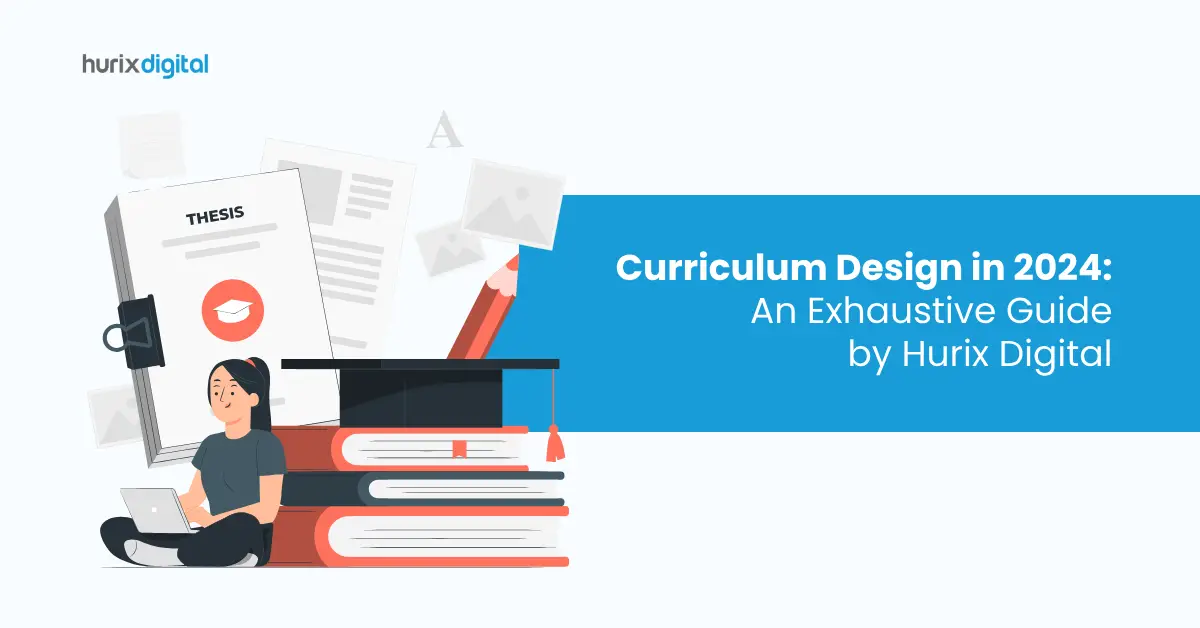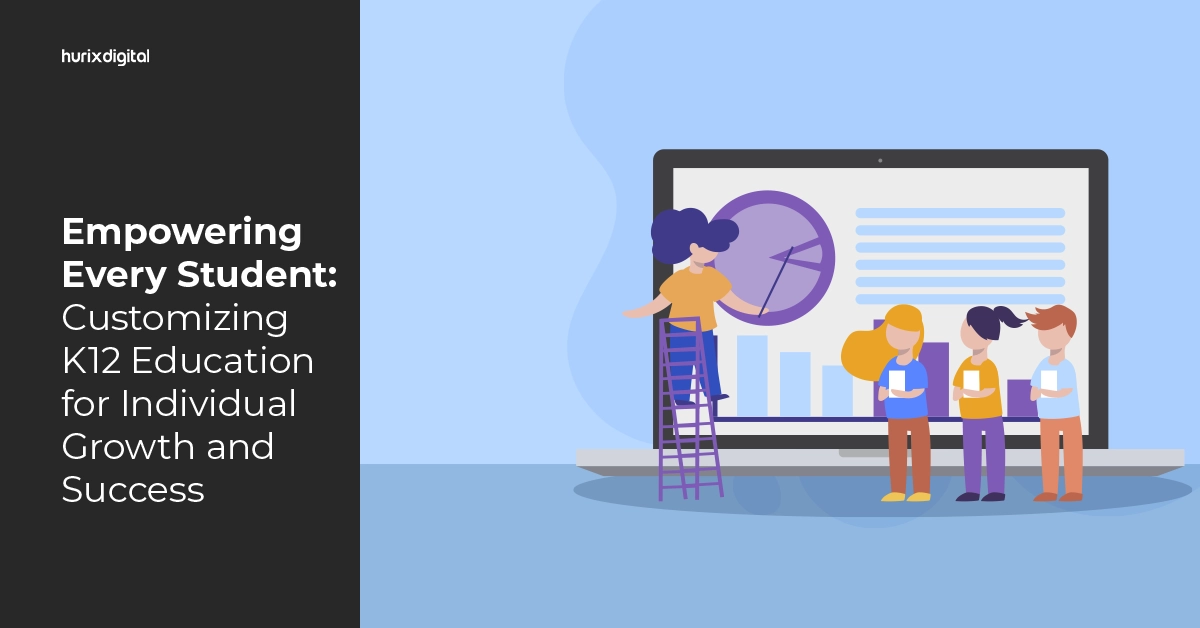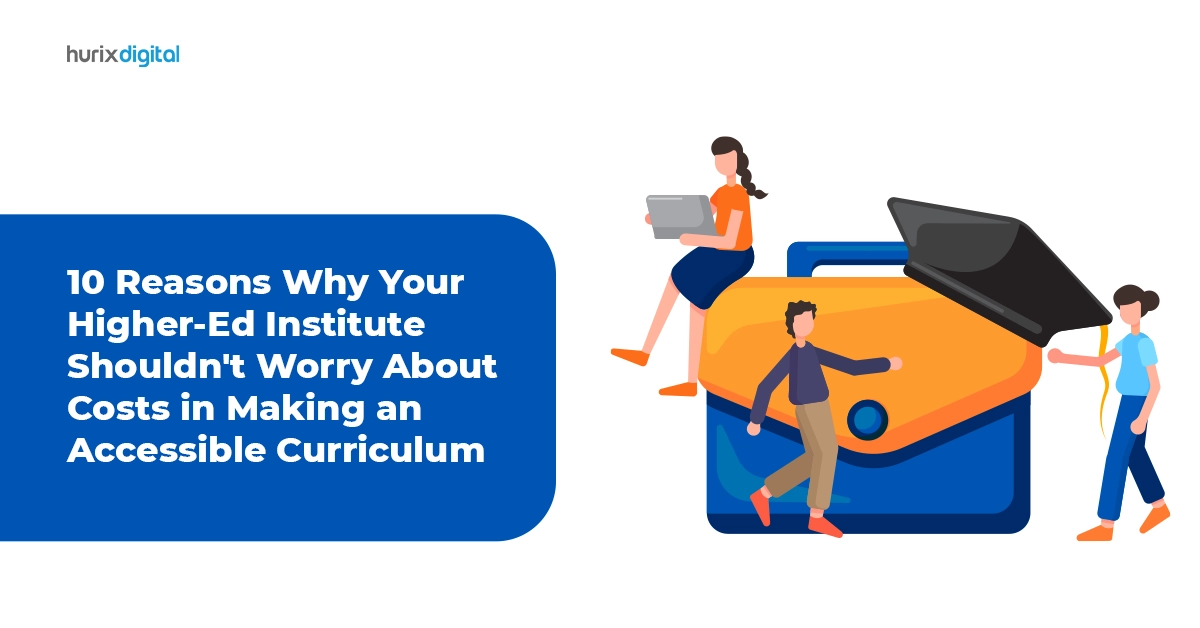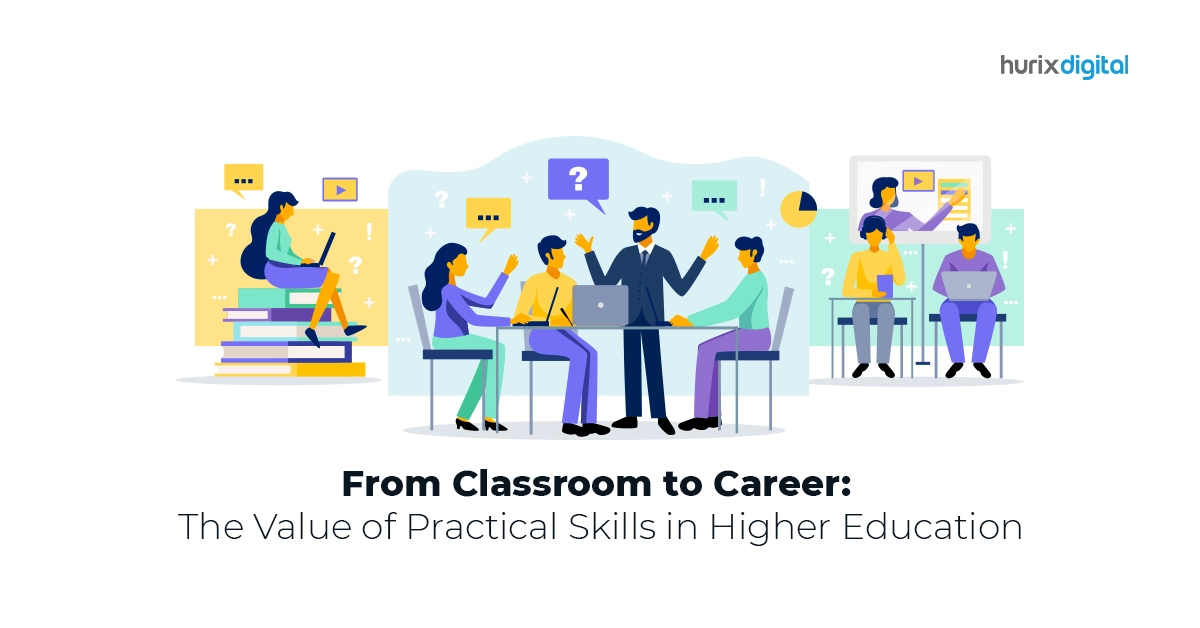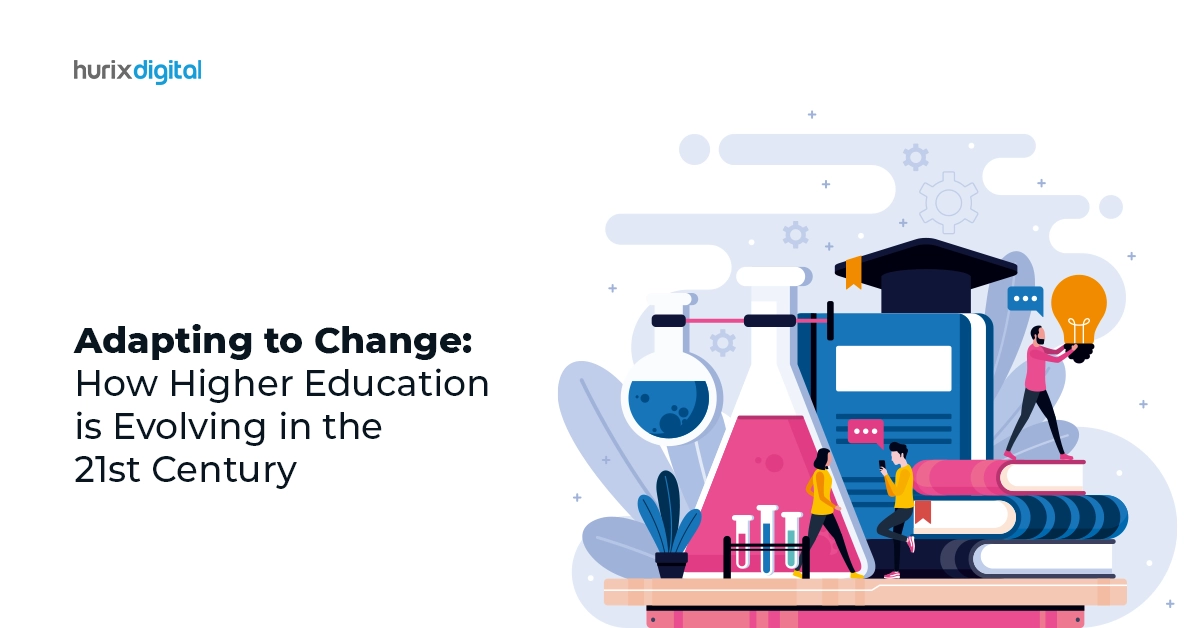Did you know that the global EdTech market is set to reach $696 billion by 2028? The K-12 and higher education segments are the driving forces behind this massive transformation. But that’s not all. As we venture into 2024, the education sector will embrace more cutting-edge tools and technologies.
As a result, you must equip yourself with the skills and knowledge that will shape the future of learning. But how do you create curricula that meet the needs of 21st-century learners? Moreover, how can you align it with the latest trends? Well, worry not. We are here for your rescue!
This comprehensive guide by Hurix Digital will explore vital curriculum design elements. Our robust solutions have helped many educators and students fulfill their learning goals. Now, it’s your turn. Let’s begin!
Table of Contents:
- The Power of Curriculum Design: Understanding Its Significance
- Transforming Education: A Guide to Future-Ready Curriculum Design
- Final Thoughts
The Power of Curriculum Design: Understanding Its Significance
Do you ever wonder about the seamless flow of knowledge in a functional learning program? How do institutes create courses that captivate students? Moreover, how do they adapt to their changing needs and foster meaningful growth?
The answer lies in effective curriculum design.
It is the deliberate planning of educational content, activities, and reviews to achieve specific outcomes. It is not a one-time activity but a continuous cycle of reflection and improvement.
Designing a purposeful curriculum is significant because it:
- Considers diverse interests, backgrounds, and societal standards to create a resonating learning experience.
- Shapes the course content, learning objectives, and instructional strategies that seamlessly intertwine.
- Influences the quality and effectiveness of education and enhances learning outcomes.
- Adapts to the student’s evolving needs, ensuring teaching remains relevant and impactful.
Now that you understand the importance of an effective curriculum, let’s move on to designing one.
Also Read: Curriculum Design: How To Develop A Successful Curriculum
Transforming Education: A Guide to Future-Ready Curriculum Design
As stated earlier, curriculum design shapes course content and influences education quality. It involves three main pillars: development, evaluation, and implementation. You can create engaging and interactive curricula by understanding these categories.
So, let’s take a closer look at each of them.
1. Curriculum Development: Building the Foundation
Curriculum development lays the foundation for the entire process. In this phase, you can define the learning objectives, select appropriate content, and design instructional strategies. Consider learners’ needs, societal demands, and emerging trends to develop a relevant curriculum.
Step 1: Conduct a Needs and Tasks Assessment
This step aims to determine the gaps and opportunities for learning and define the scope of your curriculum. Here are some curriculum development best practices:
- Determine who your learners are, their background, prior knowledge, and any specific challenges they may face.
- Gather data via surveys, interviews, or focus groups to understand learners’ skills and attitudes. It will help identify gaps between their current abilities and desired learning outcomes.
Step 2: Define Learning Goals
Setting clear and measurable learning goals is a crucial step in curriculum development. Here’s how you can frame your objectives using the SMART criteria:
- Specific: Create clear objectives that use action verbs to describe observable behaviors.
- Measurable: Design quantifiable goals with measurable criteria for assessing progress and achievement.
- Achievable: Set challenging but realistic and attainable goals that inspire your students.
- Relevant: Create learning objectives aligning with field standards and stakeholder expectations.
- Time-bound: Set a clear and reasonable time frame for your curriculum. Moreover, split your goals into smaller and manageable milestones.
Step 3: Content Selection and Sequencing
Break down the silos! Interdisciplinary learning prepares students for the complex challenges of the future. Here’s how you can execute this step:
- Organize the content in a logical manner. Start with fundamental concepts and progressing gradually to advanced topics.
- Focus on developing skills like critical thinking, communication, and problem-solving. These are essential for success in the 21st century.
- Add interactive and practical elements to create an immersive learning experience. Augment your digital learning curriculum with case studies, group projects, and real-world examples.
Step 4: Instructional Strategies and Activities
The final step in curriculum development is the selection of appropriate strategies and activities to stimulate learning. Here’s how you can create engaging learning experiences:
- Use interactive tools like videos, presentations, and online simulations. They simplify complex concepts and encourage active learning.
- Create immersive learning experiences with advancements like AI, VR, and AR. These technologies enhance engagement, streamline personalized learning, and provide real-world simulations.
- Promote a blended learning curriculum in 2024 for flexibility and dynamic education. It combines face-to-face instruction with a digital learning curriculum.
2. Curriculum Evaluation: Ensuring Continuous Improvement
The second phase of curriculum design begins with collecting relevant data for curriculum evaluation. Afterward, study it to identify patterns, trends, and areas for improvement.
Here’s how you can ensure its efficacy and make data-driven decisions:
Step 1: Continuous Assessment
Move away from traditional summative assessments and embrace continuous review methods. Integrate formative assessments to provide ongoing feedback to students. This approach allows personalized learning and identifies areas where students need extra support.
Step 2: Student Feedback
Empower students to have a voice in their education. Seek regular feedback to understand their needs, interests, and learning preferences. Conduct surveys to gather insights that can inform curriculum improvements.
Step 3: Collaborate with Educators and Experts
Don’t work in isolation! Collaborate with fellow teachers and subject matter experts to assess your curriculum. It provides a fresh perspective on the curriculum and offers suggestions for improvement.
3. Curriculum Implementation: Bringing Learning to Life
It is the last stage of the design process. It involves delivering the curriculum, monitoring student progress, and making necessary adjustments.
The following approaches can support effective curriculum implementation:
Step 1: Use Engaging Teaching Methods
Make learning fun and exciting! Using gamification can boost learner outcomes by up to 35%. So, blend game-based and experiential learning techniques to create memorable experiences.
Cultivate problem-solving, critical thinking, and creativity in your classroom. Remember, an interactive approach will make your curriculum stand out.
Step 2: Cultivate a Positive Classroom Environment
Create a safe, inclusive, diverse classroom environment that promotes collaboration and respect. A positive classroom environment will enhance student engagement and learning outcomes.
- Foster a sense of belonging among students so they feel comfortable expressing their thoughts and ideas.
- Encourage peer-to-peer learning and create opportunities for students to work together on projects.
Step 3: Promote Community Engagement
Connect education with the actual world! This approach enhances student engagement and develops their social and civic responsibility.
- Engage with the local community to provide students with authentic learning experiences.
- Partner with businesses and community leaders to bring real-world scenarios into the classroom.
Also Read: 7 Steps Of Curriculum Design: How To Design Your Curriculum
Final Thoughts
Designing a comprehensive curriculum in 2024 can be a challenging task. Yet, adopting these curriculum development best practices can prepare your students for the future.
Hurix Digital offers innovative services that can equip your students with the skills they need to thrive in the ever-changing world. Our suite of solutions incorporates a personalized learning platform and digital learning curriculum.
So, are you ready to stay ahead and embrace the future of education? Contact Hurix Digital today to explore our comprehensive curriculum design solutions.


